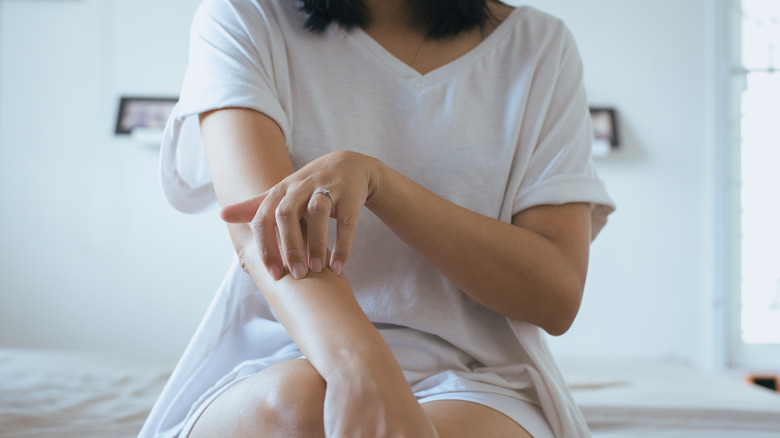It Could Be A Warning Sign Of Diabetes If Your Skin Looks Like This
Diabetes is a long-term illness that affects the body's ability to process sugar, thus causing sugar imbalances, according to the Centers for Disease Control and Prevention (CDC). Your body is naturally designed to break down foods and turn them into sugar. Later on, the sugar releases into the bloodstream, ready to be absorbed by cells and processed into energy. This process occurs in the presence of insulin — a hormone released by the pancreas.
However, diabetics either can't produce sufficient insulin or their cells fail to respond to the chemical. As a result, they have excess sugar in their blood, leading to high blood sugar levels. Ultimately, they may cause severe conditions such as heart diseases, vision problems, hearing loss, diabetic neuropathy, and even neurological diseases like Alzheimer's or dementia, warns Mayo Clinic.
The condition is classified into two types: type 1 diabetes and type 2. Type 1 diabetes is an autoimmune disorder whereas type 2 is often acquired through unhealthy lifestyle habits. More than 1.9 million people in the U.S. have type 1, according to American Diabetes Association (ADA) statistics. They also report that around 1.4 million Americans are diagnosed with diabetes yearly.
What are the signs of diabetes on the skin
Diabetes doesn't happen overnight and will show subtle signs over a few months or years. Hence, it's necessary to recognize these symptoms of diabetes sooner rather than later in order to start treatment right away. Per Cleveland Clinic, the most common signs of diabetes include blurred vision, frequent thirst, numbness in limbs, and more. In addition, you might notice significant changes in the skin.
If you have fluctuating sugar levels, watch out for dry or itchy skin. Because diabetes may impact proper blood circulation, you may experience dry skin around your feet and lower legs (via WebMD). Consistently high blood sugar levels may also increase the risk of fungal and bacterial skin infections, such as styes around your eyes or nail infections.
Another condition to look out for is diabetic dermopathy. These are scaly patches, appearing blackish-brown in color, reports Diabetes.org. Fortunately, good skin care can start at home by keeping skin clean and applying moisturizer where it's needed. If you can't solve your skin problem at home, seeking medical guidance from a dermatologist can help.


